2005 Vulcan Nomad 1600 - Motorcycle.com
Loyal MO readers might remember our Classic Tourer Comparo, where we proclaimed the 1500 Nomad to be a decent, though not terribly exciting motorcycle. So when I was invited to the press intro for the new 1600 Nomad, I was interested to see how Kawasaki might have improved their product in this important market segment.
The new Vulcan 1600 Nomad retains the elegant style of last year's 1500, but features an 82cc displacement boost to 1,552cc. Don't be deceived, big changes lurk beneath the familiar bodywork.In addition to the added muscle, Kawasaki also says the Nomad received revised steering geometry, enhanced passenger comfort and additional chrome.
However, after riding the new bike, it is patently obvious that there is more at work here than a few minor changes, as the 1600 feels like a vastly superior motorcycle.
Kawasaki downplays the updates for 2005, but if you examine the 1600 next to last year's 1500, you'll quickly notice that almost every detail is slightly different. From the front axle through the passenger seating, everything is similar, but slightly revised and I have a sneaking suspicion that there might be as little as 50% parts commonality between the two bikes. Further snooping reveals the addition of an engine counter-balancer, revised "crash bar" mounting, revised cylinder heads, revised fuel injection & ECU and innumerable esoteric differences. Fortunately, these updates don't affect the bikes $12,999 MSRP.
The bigger jugs breathe through a revised Mitsubishi digital fuel injection system, using dual 36mm throttle bodies mounted on separate intake tracts with four nozzle injectors sending two streams of fuel to each intake valve. The 16-bit ECU features specific programming for the new fuel injection system and does an excellent job of interpreting the rider's throttle inputs. In other words, there were no hiccups, lurches or flat-spots as I modulated the throttle through our snotty test conditions.
Great, everybody appreciates a well-behaved engine, but who cares... right? You really want to know if the bigger engine is faster? Yes, it is faster and more flexible everywhere in the rev range. I wouldn't mistake this powerplant for a Vulcan 2000, but its now in the thick of the classic tourer hunt, where last year's bike hung around at the back of the pack. Even with that barn door windscreen, the new Nomad is more than happy to accelerate itself into triple digits on level ground.
The engine's powerband is relatively flat, which means that it offers a smooth, even delivery of torque and requires a minimum of shifting. Even on very tight mountain roads, shifting is purely optional once 4th or 5th is engaged. Like most big twins there isn't really a top-end rush per se. Instead, the motor simply pulls strongly through the midrange, and then tapers off like a lamb.
Speaking of the windscreen, the Nomad's large old-fashioned screen seems to have been copied from a 75-year-old police bike. The problem is that 1930s cruising speeds were in the 35mph range, so it's not surprising that the Nomad's screen is nice and calm, offering great protection and smooth airflow up to 50mph.
Unfortunately, you can't really stay below 50 on most of today's highways and byways, and once speeds creep close to 60, the Nomad is in full-helmet-buffeting mode. I tried the adjustable screen in every position from full-up to full-down and was unable to find relief. After a half day of this, I was ready to get a hole saw and start cutting pressure relief vents in the pretty Plexiglas.
I know the Nomads emphasis is on classic style, but a few modern aerodynamic tricks would do wonders for its long haul comfort. Much like last year's bike, the Nomad 1600 offers excellent rider and passenger accommodations, plus some of the prettiest and most functional saddlebags on the road. Those locking art deco hard bags are a distinct advantage for the Nomad, but the seat might be its best asset. If you can deal with the buffeting (or fit a shorter windscreen) long enough to notice, you will find that the Nomad has what might be the single most comfortable riders seat in all of motorcycling.
When you first sit on it, you think "no way is this soft fluffy thing going to be comfortable for an extended stay." However, after multiple hours in the saddle, the Nomad's seat remains perfectly comfortable. Why can't every bike come with a seat of this quality?
After my time on the Nomad, I'm convinced that Kawasaki has significantly improved the bikes functionality and blessed it with a bit more character than last year's "appliance-like" 1500. If Kawasaki would fix the aerodynamics, the Nomad could easily contend for best-in-class honors. If you're in the market for a large touring cruiser, you'd be well advised to take a spin on this new Nomad. While you're out test riding and comparison-shopping, keep in mind that the stylish Nomad remains the least expensive bike in its class at $12,999.
2005 KAWASAKI VULCAN® 1600 NOMAD™ | |||||||||||||||||||||||||||||||||||||||||||||||||||||||
Features and Benefits V-Twin EngineEngine displacement increased to 1,552cc for more torque Digital Fuel Injection is revised to suit the larger engine's needs and enhance performance Dual mufflers allow more clearance for saddlebags Liquid CoolingMaintains consistent engine temperatures for long engine life and sustained power during hard use Auxiliary fan keeps things cool during all operating conditions Four Valves per CylinderBoosts low-end torque Provides maximum valve area for optimum flow Hydraulic valve lash adjusters require no maintenance Gear-driven Engine BalancerCounter-rotates at engine speed to cancel vibration Allows use of single-pin crankshaft without the heavy vibration Rubber-mounted EngineAll but eliminates engine vibration at all speeds Five-speed TransmissionGreat around-town acceleration with relaxed highway cruising Positive Neutral FinderJust lift the shift pedal from first at a stop to find neutral easily 5.3 Gallon Fuel TankRounded-edge finish for clean, upscale look Large capacity for extended touring range Large, Adjustable WindshieldLarge windshield gives excellent rider and passenger weather protection Windshield is adjustable up and down two inches Heavy-duty chromed support hardware holds the windshield rock steady Hard SaddlebagsDesigned for easy packing, these saddlebags carry an amazing amount of gear Lockable, side-open design for smooth looks and quick access Soft, removable inner bags available as an optional accessory Passenger ComfortNew floorboards, standard backrest and thicker seat provide maximum passenger comfort on long rides More Chrome for 2005New chrome engine guards help protect the engine Triple Disc BrakesDual discs up front for maximum stopping power Large, single rear disc because touring bikes carry so much of the load on the rear wheel Shaft DriveReliable, clean and quiet low-maintenance system Hydraulic Clutch ReleaseEasy to operate, requires virtually no adjustment Adjustable Control LeversFits variety of rider sizes and styles Electronic SpeedometerEliminates conventional cable-drive system Tubeless TiresLower operating temperature extends tire life Air-Adjustable Rear ShocksRebound damping is 4-way adjustable to tailor fit the ride | Specifications
MO: All Kawasaki Tests MO: Kawasaki News | ||||||||||||||||||||||||||||||||||||||||||||||||||||||
More by Sean Alexander



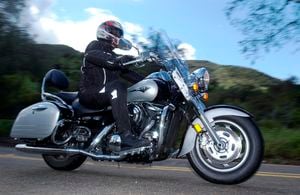





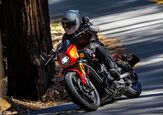
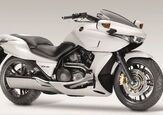
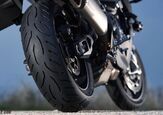
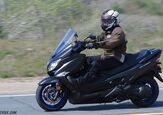
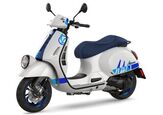
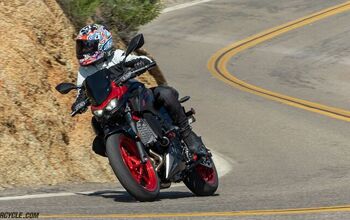

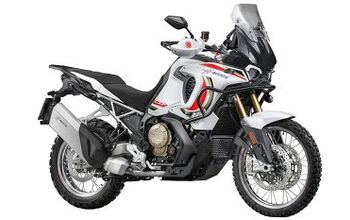
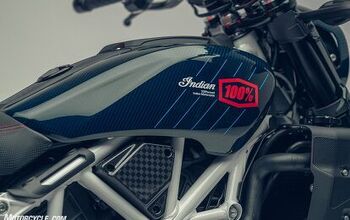
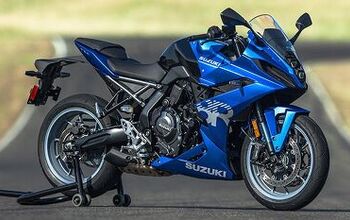
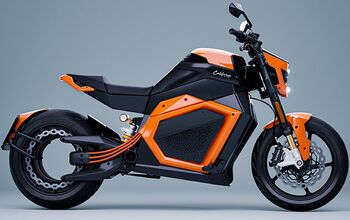
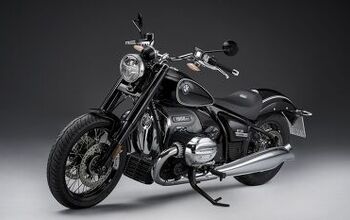
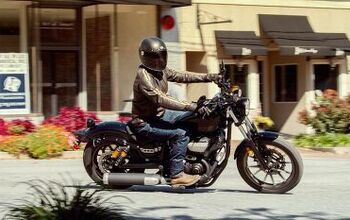
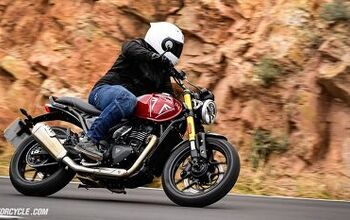
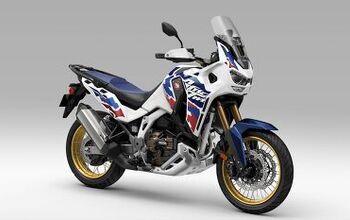
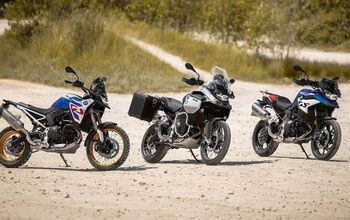
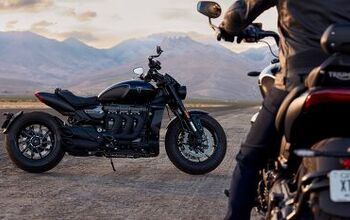
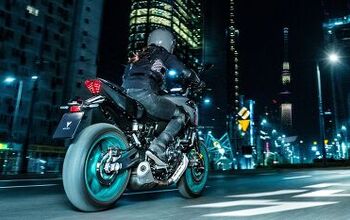

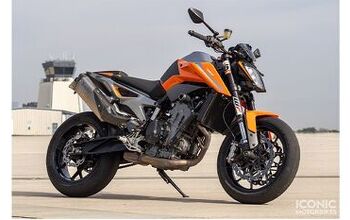

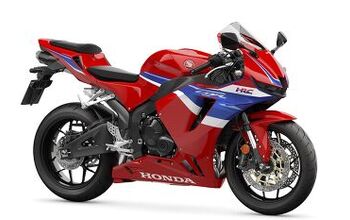
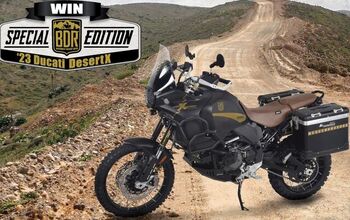
Comments
Join the conversation